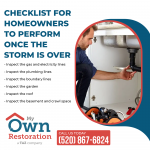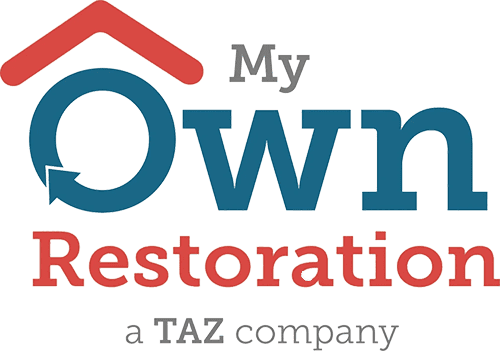Storm damage can be classified as any destruction to the property caused by a high-impact weather disturbance like a hurricane, cyclone, tornado, heavy rainfall, hail, thunder, snowfall, lightning, high-speed winds, and others.
During the onslaught of the storm, people take shelter wherever possible to prevent accidental loss of life. Then, when the storm abates, it's time to take stock of the damage to the residential establishments.

No matter how strong and safe the house may seem, a storm can break through its defenses and cause harm through water damage, broken debris, structural instability, and other effects.
Sometimes when the storm is of a very high magnitude, homeowners need permission from the authorities to return to their properties. Other times, the floodwaters take time to recede to allow people to re-enter their homes.
Then, it is time to call flood restoration services and take stock of the damage to assess repairs, reconstruction, costs, time, and insurance claims. Here is a brief checklist for homeowners to perform once the storm is over:
- Gas and electricity lines: Generally, utilities like gas, electricity, and fire are switched off during high-speed storms. Drying and cleaning out the gadgets/sockets before switching them on again is advisable to prevent explosions or short circuits.
- Plumbing lines: The storm might have damaged plumbing lines which may have developed leaks that will cause water to drip into the house. One must keep an eye out for any water stains or spots that will indicate internal leakage.
- Boundary lines: During a storm, fencing may get broken or ripped off, which may need reinforcing to prevent security mishaps.
- Garden: Garden equipment might have been tossed around, planters may be broken/overturned, and plants would be uprooted or damaged due to the storm's severity. Moreover, there could be debris in the form of broken glass, shingles, branches, and other items that will need to be cleared out.
- Roof: The roof may suffer damage from broken branches, causing the shingles to break off. A thorough inspection must ensure the top is water and air-tight against atmospheric elements.
- Basement and crawl space: Water is most likely to have been collected in the basement and crawl space after a storm. The stagnant water can cause water-borne diseases and mildew growth. Extracting this water must be a top priority, and both areas must be thoroughly dried.
- Structural framing: Storms can shake foundations and create cracks in walls, roofs, and ceilings, leading to structural instability. Also, the door and window frames might get broken or damaged, allowing water to seep through.
- Electrical Appliances: Before using any appliance, check for debris and water that might have become lodged inside and could cause a short circuit if plugged in.
- HVAC units: There could be severe damage to the HVAC system's ducting, compressor, and other outdoor components. Not to mention dirt and debris collection, which might hamper its proper functioning.
- Document all damage: It helps to photograph and list all the damage to provide proof to the insurance claim adjuster for the storm damage.
- Contact the insurance agent: Connect with the insurance company to register a case for claim settlement for the storm damage.
- Get an estimate for repair and maintenance: Contact a professional flood restoration services team like My Own Restoration to get a quick estimate for costs for repair and rebuilding works.
Why My Own Restoration?
My Restoration is a professional team of highly skilled and trained flood restoration services technicians based in Tucson, Arizona.

This team has highly specialized equipment and modern technology at its disposal to provide the best solution to its clients.
Their USP is:
- 24/7 on-call for any water damage-related emergencies
- Work with every insurance agency for quick claim redressals
- Experienced and trained team of experts
Call My Own Restoration at (520) 867-6824 or email us to get a swift response to your troubles.
































